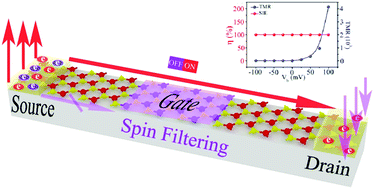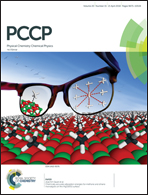Designing lateral spintronic devices with giant tunnel magnetoresistance and perfect spin injection efficiency based on transition metal dichalcogenides
Abstract
Giant tunnel magnetoresistance (TMR) and perfect spin-injection efficiency (SIE) are extremely significant for modern spintronic devices. Quantum transport properties in a two-dimensional (2D) VS2/MoS2/VS2 magnetic tunneling junction (MTJ) are investigated theoretically within the framework of density functional theory combining with the non-equilibrium Green's functions (DFT-NEGF) method. Our results indicate that the designed MTJ exhibits a TMR with a value up to 4 × 103, which can be used as a switch of spin-electron devices. And due to the huge barrier for spin-down transport, the spin-down electrons could hardly cross the central scattering region, thus achieving a perfect SIE. Furthermore, we also explore for the effect of bias voltage on the TMR and SIE. We find that the TMR increases with the increasing bias voltage, and the SIE is robust against either bias or gate voltage in MTJs, which can serve as effective spin filter devices. Our results can not only give fresh impetus to the research community to build MTJs but also provide potential materials for spintronic devices.



 Please wait while we load your content...
Please wait while we load your content...